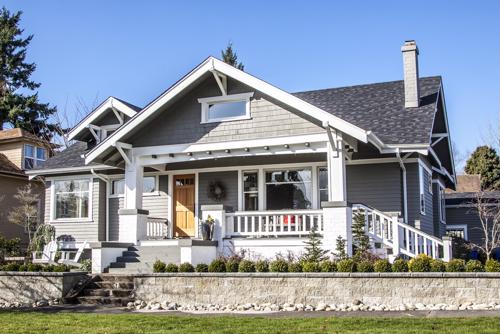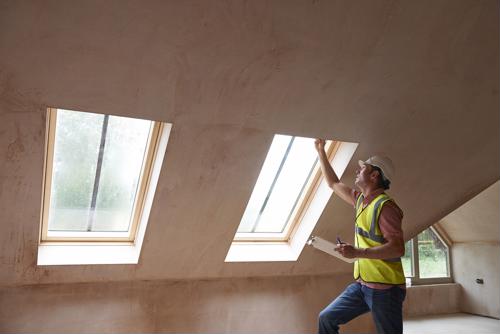
One of the biggest challenges many homebuyers face is the down payment for a home—a crucial step in purchasing a home. But the down payment doesn’t have to be a deal-breaker.
If you’re unsure if you can afford a down payment, we’re here to explain how down payment assistance (DPA) programs can help eligible borrowers achieve homeownership affordably.
So, what exactly does down payment assistance look like and how can you qualify? Let’s dive into both, so you can continue forward in your homebuying journey.
What is down payment assistance?
Down payment assistance (DPA) programs were created to help new and repeat homeowners afford the down payment on their home mortgages. They’re offered across the country, so the chances of not being able to find the right DPA program are slim.
Assistance comes in several forms, including, but not limited to:
- Grants: Cash given to buyers that don’t need to be paid back
- Low-cost loans: A second mortgage where you make small payments to pay it back
- No interest loans: Another second mortgage where the interest doesn’t need to be paid back
- Deferred loans: Assistance that doesn’t need to be repaid until you refinance or sell your home
These programs are funded through national, state, or local organizations, or provided by financial institutions.
Some loans offer forgiveness after a set time or if you meet other criteria, such as staying in the home for a specific amount of time.
DPA is available for first-time homebuyers. However, if you haven’t owned a home in the past three years, you’re still eligible to qualify as a “first-time” buyer.
Some DPA programs also help cover closing costs in which the down payment and closing costs are rolled into one grant or loan product.
The amount of DPA you can receive depends greatly on where you want to purchase a home. The best place to start is by researching what’s available in your state and discussing it with a financial institution.
One of the biggest myths surrounding down payment assistance is that it’s hard to qualify. However, there are thousands of DPA programs—the trickiest part is finding the right program to suit your needs.
Qualifying for down payment assistance
The requirements are one of the first things you should pay attention to when selecting a DPA program.
The requirements outline specific criteria that you must meet to be eligible for assistance. These requirements can vary from state to state, however, you can typically expect the following:
- Income level limits
- Credit score requirements
- Property Restrictions
- Specific profession limits
- Meeting lender’s mortgage requirements
- Fulfilling a home-buying educational course
- Using a DPA-approved lender
Income level limits will vary by program, but that’s not to say you must have a low-income level to qualify. There are many DPA programs available for low-to-moderate levels of income.
California’s income level limits, for example, can range from $165,000 to $300,000 for the CALHFA MyHome Assistance Program.
Your credit score plays a large role in home mortgages as well as with DPA programs. Typically, you can expect credit score requirements ranging in the 600s. There are also DPA programs that don’t have a minimum credit score requirement.
The Homes for Veterans program in New York has no credit score requirements and can be used with VA loans. This program covers up to $3,000 or 3% of the purchase price up to $15,000, whichever is higher.
Some DPA programs may have specific property restrictions or offer more benefits if you choose a property in a ‘target’ location. Some states, like Ohio, provide maps of target areas across the state, which can help narrow down your search.
You may also qualify for assistance simply because of your profession. EMTs, teachers, law enforcement, and firefighters are just a few professions eligible for specific DPA programs.
Most common mortgage types allow for assistance, including:
- Conforming mortgages from Fannie Mae or Freddie Mac
- VA loans
- FHA loans
- USDA loans
Many DPA programs require buyers to complete a short homebuyer education course. These courses are designed to encourage and help you through homeownership to ensure you’re as prepared for such a major investment. Your lender can typically help you find a certified housing counselor who offers classes.
Tips to get started with down payment assistance
First, the best way to understand what you can qualify for in a mortgage is by speaking with a lending professional.
An experienced and local lender should be knowledgeable about the county and state DPA programs that you could qualify for.
While an experienced lending professional can outline what’s available for you, it wouldn’t hurt to research what’s available in your surrounding area before you meet with a lender to get the most out of your meeting.
Lenders are also able to show you the different types of mortgage options that would work for you.
It’s a misconception that DPA is only available to those with very low income. If you’re eligible for assistance to afford your home— don’t shy away from the help. DPA programs have been helping borrowers of all income levels achieve homeownership for a long time and will continue to do so.
If you’re eligible for a second mortgage to cover your down payment, make sure to review your budget. Start with a mortgage calculator to see an estimate of how much your monthly mortgage payments might be, and then add in the costs for DPA to figure out how much you can afford.
Choose a lender experienced with down payment assistance
Not all lenders are approved by every DPA program or they find borrowers with assistance challenging to help.
You want to work with experienced and trustworthy professionals like the team at The Federal Savings Bank.
The Federal Savings Bank is veteran-owned and proud to serve our communities with affordable home mortgages and down payment assistance.
We understand that purchasing a home is a major milestone and can be financially challenging, which is why we guarantee to be with you every step of your home-buying journey.
Get started today to learn more about how we can help you afford homeownership.
Subject to credit approval. Terms and conditions may apply. Subject to VA eligibility requirements. Property insurance is required on all loans secured by property. Down payment assistance requirements are based on the mortgage insurer or guarantor’s guidelines. Borrower may fund down payment and closing costs. Down Payment Assistance Program, which assist eligible homebuyers with purchasing a home. Down payment assistance programs are not eligible for all potential homebuyers.
This information is intended for educational purposes only. Products and interest rates subject to change without notice. Loan products are subject to credit approval and include terms and conditions, fees and other costs. Terms and conditions may apply. Property insurance is required on all loans secured by property. VA loan products are subject to VA eligibility requirements. Adjustable Rate Mortgage (ARM) interest rates and monthly payment are subject to adjustment. Upon submission of a full application, a mortgage banker will review and provide you with the terms, conditions, disclosures, and additional details on the interest rates that apply to you individual situation.


